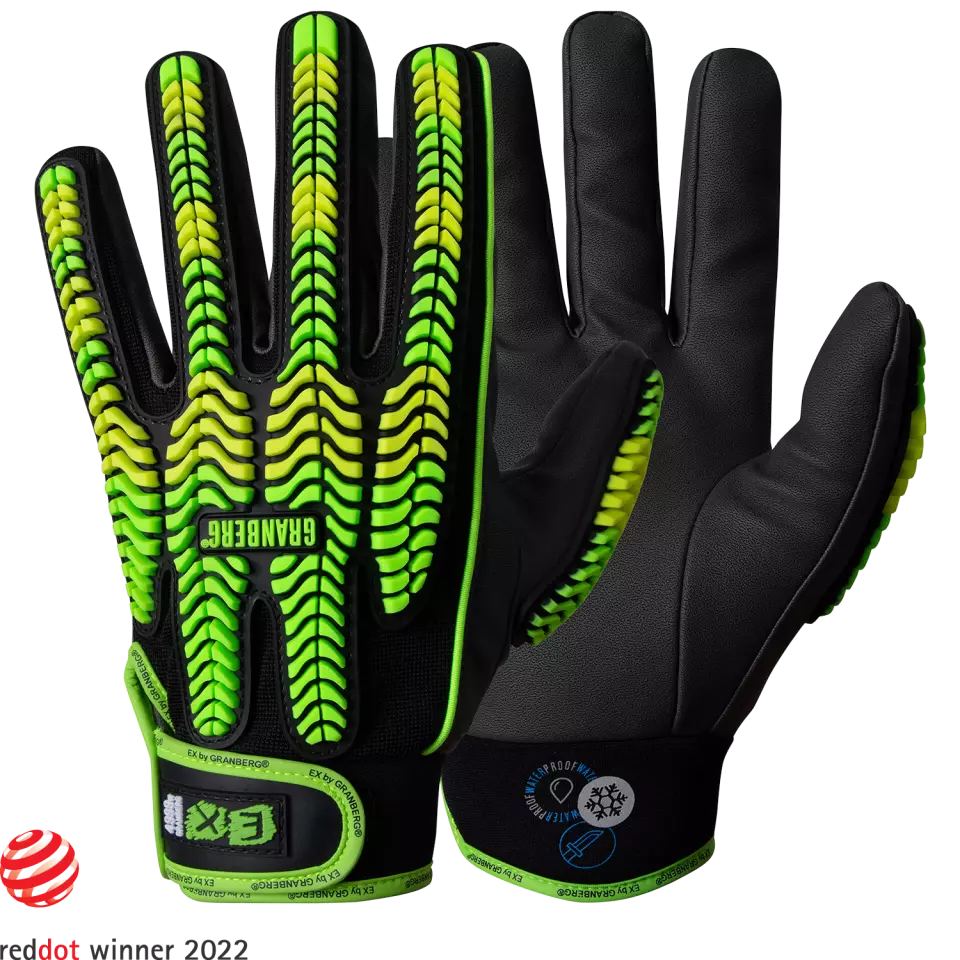
Features You'll Love

Cuff Style · Hook And Loop
Determines how the glove secures around the wrist, affecting fit, comfort, and protection coverage at the wrist area.

EN 388 · Puncture Resistance Level 2
EN 511 · Cold Contact Level 1, Convective Cold Level 1
Withstands moderate force from sharp objects like heavy-duty splinters or wires.
Provides light thermal insulation when directly handling cold objects. This offers basic protection for short or intermittent contact with cold surfaces, suitable for general tasks in cool conditions rather than prolonged exposure to extreme cold.
This glove provides light thermal insulation against the penetrating chill from cold air and wind. It is suitable for use in cool conditions, offering a basic level of protection to keep your hands warm.
Granberg
EX® Cut-, Impact-, and Water-Resistant Winter Gloves, Black/Green, 6 pairs
EX® Cut-, Impact-, and Water-Resistant Winter Gloves, Black/Green, 6 pairs
4.3 / 5
122,71 €
Price per 6 pairs
20,45 € / pair
Choose size
Free delivery
Features You'll Love

Cuff Style · Hook And Loop
Determines how the glove secures around the wrist, affecting fit, comfort, and protection coverage at the wrist area.

EN 388 · Puncture Resistance Level 2
EN 511 · Cold Contact Level 1, Convective Cold Level 1
Withstands moderate force from sharp objects like heavy-duty splinters or wires.
Provides light thermal insulation when directly handling cold objects. This offers basic protection for short or intermittent contact with cold surfaces, suitable for general tasks in cool conditions rather than prolonged exposure to extreme cold.
This glove provides light thermal insulation against the penetrating chill from cold air and wind. It is suitable for use in cool conditions, offering a basic level of protection to keep your hands warm.
Product description
These professional safety gloves combine superior protection against cuts and impacts with exceptional weather resistance and comfort. The innovative MicroSkin Shield® construction features a waterproof ProTex™ membrane that maintains excellent breathability while keeping hands dry. The advanced design incorporates powerful yet flexible impact protection on the back of hand and a cut-resistant palm layer, making these gloves ideal for demanding outdoor work environments.
Product Features:
- MicroSkin Shield® synthetic material with hook and loop closure
- Powerful but soft impact protection on back of hand
- Cut-resistant layer in palm
- Waterproof ProTex™ membrane with excellent breathability
- Warm and soft lining with high flexibility
- Excellent grip in both dry and wet conditions
Technical Details:
- Back material: Spandex/Polyester
- Liner: Para Aramid with ProTex® membrane
- Palm material: MicroSkin Shield®
- Cut resistance: Level D
- ANSI ratings: Cut A4, Impact Level 2
- Cold protection: Level 1 (Convective and Contact)
Protection Features:
- Cut resistant
- Impact protection
- Cold resistant
- Tear resistant (Level 3)
- Waterproof
- Puncture resistant (Level 2)
Standards:
- CE Category II
- EN ISO 21420:2020
- UKCA certified
Recommended Applications:
- Outdoor work with cut and impact risks
- Cold weather operations
- Wet environment tasks